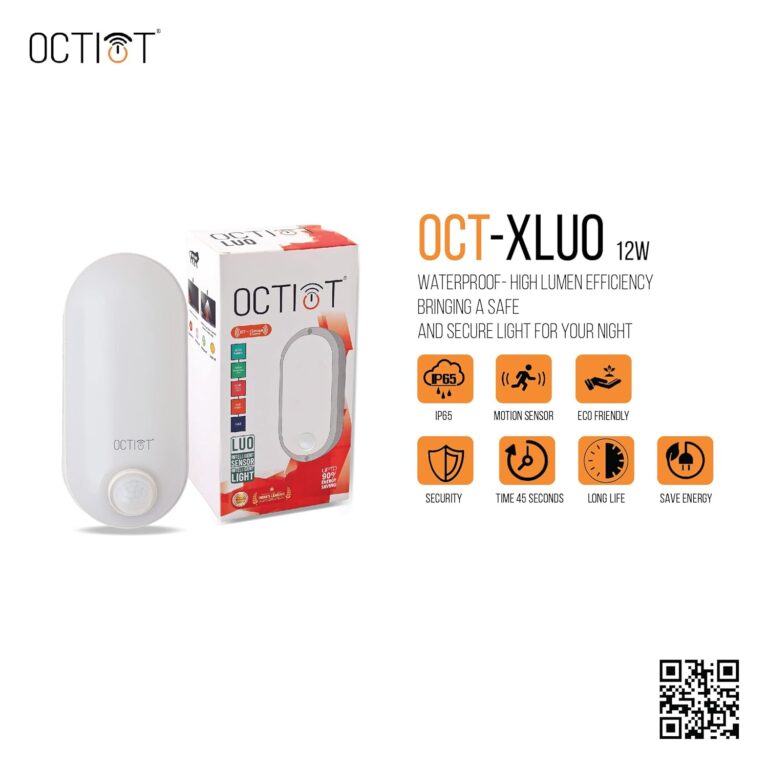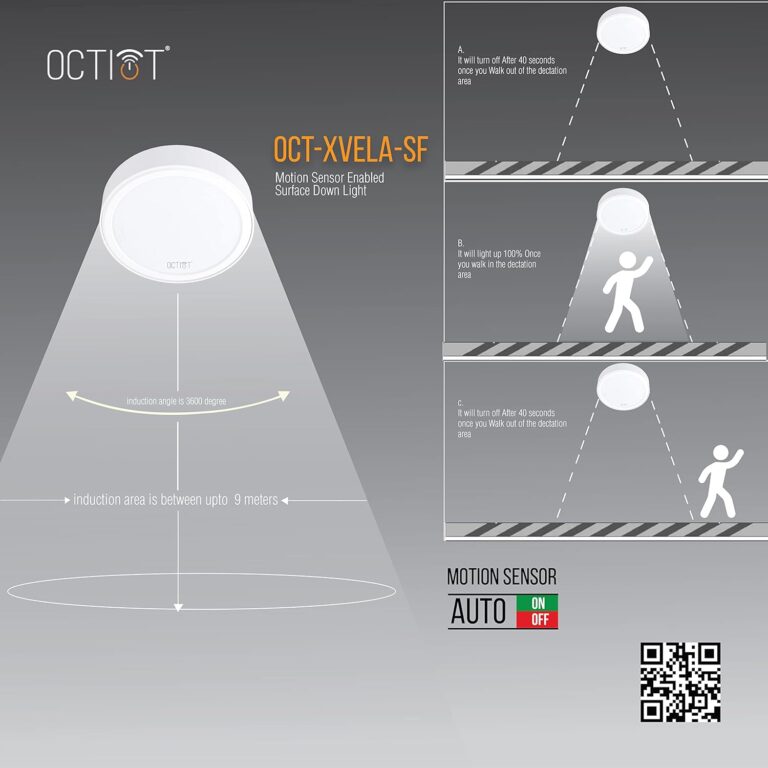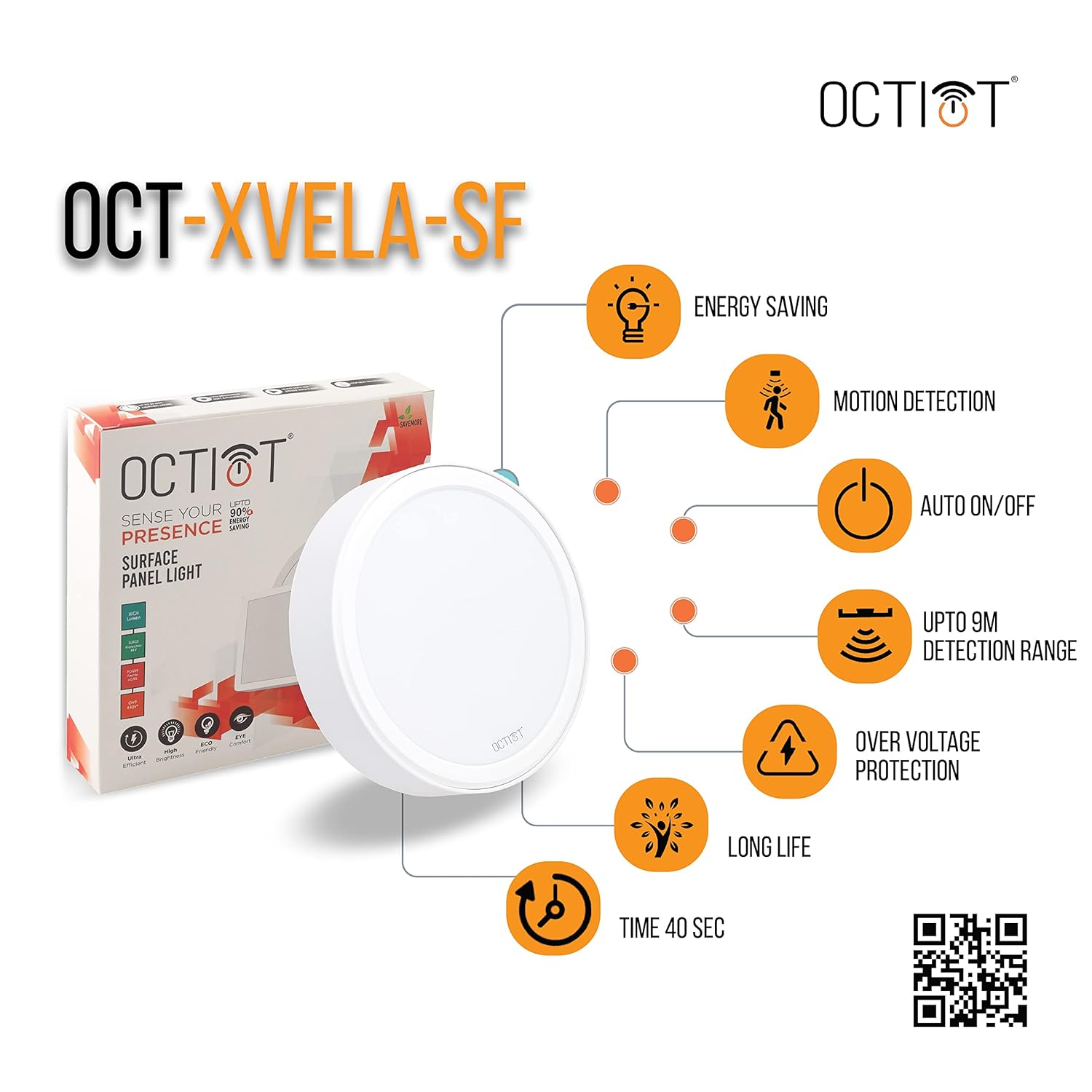In the realm of motion detection, a well-made choice of the right motion sensor light could prove to be of significant importance with regards to how functional and efficient one can become. With regards to categories of these pieces are two main types, namely; Passive Infrared (PIR) sensors and Microwave sensors which are leading the way. Knowing how different they are in technology, this essay looks at their uses as well as what they are advantaged by so as for you to be able to choose what would be most suitable depending on your situation.
What is a PIR Sensor?

A Passive Infrared (PIR) sensor is a motion sensor light that detects movement because of infrared emissions from objects. They are used often. This is how it works:
Description: In PIR motion sensor lights, the pyroelectric element serves as a receptor for infrared radiation alterations. A motion before the detector leads to fluctuation in energy emitted as infrared beams causing the alarm.
Motion sensor lights using PIR applications are common in residential and commercial security systems, light controls and applications for detecting occupancy.
Pros: Human presence detection is highly dependable, power efficient, and economical by using Passive Infrared (PIR) motion sensor lights.”
What is a Microwave Sensor?

Microwave motion sensors, also officially called as microwave radar sensors. Movement is detected by microwave sensor light using microwave radar technology. Active microwave signals are emitted by microwave sensor light all the time. Here’s how they work:
The system is composed of microwave sensor lights that generate microwaves then sense the change they undergo when hitting a mobile entity. Extremely prone microwave sensor lights which can see through barriers such as walls are used in this case. The principle deployed in detecting motion using these motion sensor lights is anchored on the Doppler effect whereby the motion-related difference in wave frequency is turned into the primary input.
Microwave sensor lights find broad application in automatic door openers, security applications, speed detection systems, and at places where PIR motion sensor lights are less effective.
Let us take a look at the advantages of microwave sensors in the following context. They can cover more space than ordinary lights would cover; they also have the ability to penetrate walls or any other obstruction around them, this means that there are higher chances for such systems to detect motion even when such motions happen behind walls or any other obstacles on their way. Due to this reason, their sensitivity and detection range have been improved over time.
Key Differences Between PIR and Microwave Sensors

1.Mechanism of Detection:
PIR Sensor: This motion detector can sense changes in infrared radiation.
Microwave Sensor:The Doppler effect is used by this motion sensor to detect microwave signal reflections changes.
2. Range and Coverage:
PIR Sensor: This movement sensor has a restricted field of view and lesser scope.
Microwave Sensor:This microwave sensor is able to detect movement across larger areas and occasionally through materials such as walls or glass.
3. Sensitivity and Reliability:
PIR Sensor: “This motion detector floodlight is excellent when it comes to catching the presence of humans, although it can also be set off by animals or thermal variations.”
Microwave Sensor: “These motion sensor lights are very responsive when it comes to detecting movement—they would make a better choice should you need them in challenging environments.
4. Power Consumption:
PIR Sensor: Typically, PIR motion detectors consume less power.
Microwave Sensor: The Microwave Movement Sensors consume much more power than PIR sensors because it continuously produces signals and receives them.
5. Environment Suitability:
PIR Sensor: This motion sensor lamp is best used in indoor environments with controlled temperatures.
Microwave Sensor: This moving light sensor is useful for places both inside and outside, including industrial contexts where other sensors may be influenced by environmental conditions.
Using both PIR and Microwave Sensors is the best decision ever

Dual technology sensors have several terms like dual-tech sensors and dual-technology motion sensors because they combine two different detection technologies that help improve accuracy and reliability when it comes to detecting motion or presence in any given area. Furthermore, security systems often apply these motion sensor lights along with lighting control systems or occupancy detection mechanisms so as to ensure they only work when necessary and their detection of any movements is always correct.
The two technologies that are normally used in dual-technology sensors are

1. Passive Infrared (PIR) Technology: PIR motion detectors detect variations in infrared energy emitted by things inside their range. They respond if a human or thing moves inside their region by triggering a response on recognition of new energy sources.Suppressors of sound on background noises that can help teachers in classrooms.
2. Microwave (MW) Technology: The microwave detectors are responsible for transmitting microwaves and studying their responses to movement stimuli. They will sense the movement even if it occurs behind a wall or glass or other barriers. Such devices have a better ability of observing the range of motion than any other ones do. However, they cannot differentiate between different types of movements as well as infrared ones, for instance.
By combining PIR and microwave motion sensor technologies, dual technology sensors can provide more reliable detection compared to using either technology alone. The PIR motion sensor lights help filter out false alarms caused by environmental factors like moving tree branches or changes in temperature, while the The microwave motion sensor lights enhance sensitivity and detection range. The dual technology approach reduces the likelihood of false positives and negatives, making these motion sensor lights suitable for applications where reliability and accuracy are critical, such as security systems in commercial buildings, warehouses, and outdoor areas.
Conclusion
In differentiating PIR and microwave movement sensors finally depend on your explicit requirements and application milieu. When a cheap option is needed for conditions one can control, a PIR sensor for motions would do. But in larger areas, environments likely to have some obstacles or areas that need high sensitivity, a microwave radar sensor is better or a combination of PIR MW would be necessary.
Contect us:
In the realm of motion detection, a well-made choice of the right motion sensor light could prove to be of significant importance with regards to how functional and efficient one can become. With regards to categories of these pieces are two main types, namely; Passive Infrared (PIR) sensors and Microwave sensors which are leading the way. Knowing how different they are in technology, this essay looks at their uses as well as what they are advantaged by so as for you to be able to choose what would be most suitable depending on your situation.
What is a PIR Sensor?

A Passive Infrared (PIR) sensor is a motion sensor light that detects movement because of infrared emissions from objects. They are used often. This is how it works:
Description: In PIR motion sensor lights, the pyroelectric element serves as a receptor for infrared radiation alterations. A motion before the detector leads to fluctuation in energy emitted as infrared beams causing the alarm.
Motion sensor lights using PIR applications are common in residential and commercial security systems, light controls and applications for detecting occupancy.
Pros: Human presence detection is highly dependable, power efficient, and economical by using Passive Infrared (PIR) motion sensor lights.”
What is a Microwave Sensor?

Microwave motion sensors, also officially called as microwave radar sensors. Movement is detected by microwave sensor light using microwave radar technology. Active microwave signals are emitted by microwave sensor light all the time. Here’s how they work:
The system is composed of microwave sensor lights that generate microwaves then sense the change they undergo when hitting a mobile entity. Extremely prone microwave sensor lights which can see through barriers such as walls are used in this case. The principle deployed in detecting motion using these motion sensor lights is anchored on the Doppler effect whereby the motion-related difference in wave frequency is turned into the primary input.
Microwave sensor lights find broad application in automatic door openers, security applications, speed detection systems, and at places where PIR motion sensor lights are less effective.
Let us take a look at the advantages of microwave sensors in the following context. They can cover more space than ordinary lights would cover; they also have the ability to penetrate walls or any other obstruction around them, this means that there are higher chances for such systems to detect motion even when such motions happen behind walls or any other obstacles on their way. Due to this reason, their sensitivity and detection range have been improved over time.
Key Differences Between PIR and Microwave Sensors

1.Mechanism of Detection:
PIR Sensor: This motion detector can sense changes in infrared radiation.
Microwave Sensor:The Doppler effect is used by this motion sensor to detect microwave signal reflections changes.
2. Range and Coverage:
PIR Sensor: This movement sensor has a restricted field of view and lesser scope.
Microwave Sensor:This microwave sensor is able to detect movement across larger areas and occasionally through materials such as walls or glass.
3. Sensitivity and Reliability:
PIR Sensor: “This motion detector floodlight is excellent when it comes to catching the presence of humans, although it can also be set off by animals or thermal variations.”
Microwave Sensor: “These motion sensor lights are very responsive when it comes to detecting movement—they would make a better choice should you need them in challenging environments.
4. Power Consumption:
PIR Sensor: Typically, PIR motion detectors consume less power.
Microwave Sensor: The Microwave Movement Sensors consume much more power than PIR sensors because it continuously produces signals and receives them.
5. Environment Suitability:
PIR Sensor: This motion sensor lamp is best used in indoor environments with controlled temperatures.
Microwave Sensor: This moving light sensor is useful for places both inside and outside, including industrial contexts where other sensors may be influenced by environmental conditions.
Using both PIR and Microwave Sensors is the best decision ever

Dual technology sensors have several terms like dual-tech sensors and dual-technology motion sensors because they combine two different detection technologies that help improve accuracy and reliability when it comes to detecting motion or presence in any given area. Furthermore, security systems often apply these motion sensor lights along with lighting control systems or occupancy detection mechanisms so as to ensure they only work when necessary and their detection of any movements is always correct.
The two technologies that are normally used in dual-technology sensors are

1. Passive Infrared (PIR) Technology: PIR motion detectors detect variations in infrared energy emitted by things inside their range. They respond if a human or thing moves inside their region by triggering a response on recognition of new energy sources.Suppressors of sound on background noises that can help teachers in classrooms.
2. Microwave (MW) Technology: The microwave detectors are responsible for transmitting microwaves and studying their responses to movement stimuli. They will sense the movement even if it occurs behind a wall or glass or other barriers. Such devices have a better ability of observing the range of motion than any other ones do. However, they cannot differentiate between different types of movements as well as infrared ones, for instance.
By combining PIR and microwave motion sensor technologies, dual technology sensors can provide more reliable detection compared to using either technology alone. The PIR motion sensor lights help filter out false alarms caused by environmental factors like moving tree branches or changes in temperature, while the The microwave motion sensor lights enhance sensitivity and detection range. The dual technology approach reduces the likelihood of false positives and negatives, making these motion sensor lights suitable for applications where reliability and accuracy are critical, such as security systems in commercial buildings, warehouses, and outdoor areas.
Conclusion
In differentiating PIR and microwave movement sensors finally depend on your explicit requirements and application milieu. When a cheap option is needed for conditions one can control, a PIR sensor for motions would do. But in larger areas, environments likely to have some obstacles or areas that need high sensitivity, a microwave radar sensor is better or a combination of PIR MW would be necessary.
Contact us: 088600 12342
For more information: sales@octiot.com




